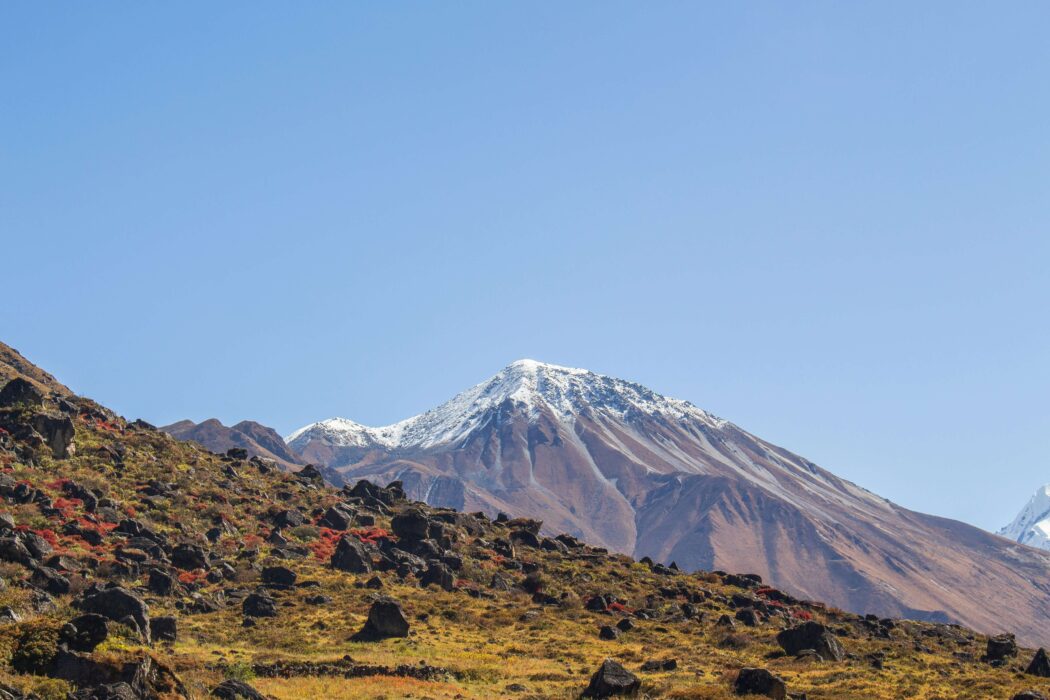Share This:

Langtang Valley Trek: Exploring Nepal’s Hidden Gem and Local Culture
The Langtang Valley, which lies hidden away in the middle of the Himalayas, is proof of Nepal’s amazing natural beauty and rich cultural legacy. Tucked away from the bustling crowds that flock to more popular trekking destinations, this hidden gem offers a unique experience for adventure enthusiasts seeking a more serene and authentic journey. Trekkers can see the majesty of snow-capped peaks, beautiful forests, and traditional villages as the Langtang Valley Trek travels through natural surroundings. Moreover, the trek offers an immersive encounter with the local culture, providing a glimpse into the lives of the resilient people who call this remote region home.
A Trekker’s Paradise: The Natural Beauty of Langtang Valley
The Langtang Valley Trek begins just a day’s drive from Kathmandu, making it easily accessible for those with limited time. Trekkers will experience a symphony of chirping birds and the rustle of leaves beneath their feet as the track progressively ascends through deep forests of rhododendron and pine. The scenery changes as you go higher, offering expansive views of charming hamlets, terraced farms, and distant snow-capped summits.
The Langtang National Park, a refuge for nature lovers and wildlife enthusiasts, is one of the trek’s highlights. The park harbors untouchable animals like the red panda, the Himalayan tahr, and several bird species. With a bit of luck and patience, trekkers may spot these creatures in their natural habitat, adding an extra layer of excitement to the journey.
As the trail ascends further, the Langtang River accompanies trekkers, its melodious flow echoing through the valley. The Langtang region is particularly well-known for its lakes formed by glaciers, the most notable of which is Gosainkunda. Nestled amidst pristine surroundings, these lakes are considered sacred by the locals and offer a spiritual retreat for trekkers. Visitors are left with unforgettable memories of this magnificent view, which is created by the crystal-clear waters reflecting the surrounding snow-capped peaks.
Encountering Local Villages: The Heart of Langtang Culture
Besides its natural charm, the Langtang Valley Trek offers a unique opportunity to fully engage with the region’s diverse cultural heritage. The trail winds through several traditional Tamang and Sherpa villages, offering trekkers a chance to witness the daily lives of the people who have inhabited these remote mountains for generations.
The Tamangs, an indigenous group with a unique culture and language, welcome trekkers with warm hospitality. Intricately carved wooden houses, prayer wheels, and fluttering prayer flags adorn their villages, adding a touch of spirituality to the surroundings. Engaging with the locals provides a window into their customs, traditions, and folklore, enriching the trekking experience with cultural insights.
The resilient spirit of the locals is palpable in the village of Langtang, tragically affected by the 2015 earthquake. Reconstruction efforts have been underway, and visitors can witness the community’s determination to rebuild their lives. The villagers’ stories of survival and recovery echo through the valleys, leaving trekkers inspired by the human spirit’s capacity to endure and thrive in the face of adversity.
Monasteries and Spiritual Sanctuaries: A Glimpse into Nepal’s Religious Heritage
Monasteries and sacred monuments fill the Langtang Valley, offering spiritual significance to travelers. One such significant site is the Kyanjin Gompa, a Buddhist monastery nestled at an altitude of 3,870 meters. Surrounded by snow-clad peaks, the monastery provides a tranquil space for both trekkers and locals to seek solace and reflection.
Kyanjin Gompa also serves as a base for those aspiring to climb Tsergo Ri, a vantage point that offers panoramic views of the Langtang Valley and its surrounding peaks. The challenging but rewarding climb heightens the sense of accomplishment at the summit, as awe-inspiring vistas unfold before your eyes.
Buddhist prayer flags flutter in the wind, their vibrant colors symbolizing the elements and sending prayers into the universe. The serene atmosphere of the monastery, coupled with the backdrop of towering mountains, creates an ambiance of peace and introspection, inviting trekkers to connect with their spiritual side amid the grandeur of nature.
Culinary Delights: Tasting the Flavors of Langtang
Nepalese food is an essential component of the Langtang Valley Trek experience. Local teahouses along the trail offer a variety of traditional dishes that not only nourish the body but also provide a cultural gastronomic experience. Dal Bhat, a lentil soup served with rice and a mix of vegetables, is a staple that fuels trekkers with the necessary energy for their journey.
Yak cheese is another local delicacy that deserves a try. The high-altitude pastures of Langtang provide an ideal environment for yaks, and their milk is used to produce a variety of dairy products, including cheese. Trekkers can savor the distinct flavor of yak cheese in dishes or enjoy it as a snack during breaks, adding a local touch to their culinary adventure.
The warmth of the teahouse hospitality extends to the dining experience, where trekkers often find themselves sharing meals and stories with fellow adventurers from around the world. These communal dining spaces become hubs for cultural exchange, creating lasting memories and friendships amid the rugged beauty of the Langtang Valley.
Preserving the Ecosystem: Responsible Tourism in Langtang
Responsible tourism practices must protect the fragile ecology of the Langtang Valley, which is more than just a hiking destination. Unsustainable tourism easily disturbs the fragile balance in which the region’s relatively rare and endangered species of flora and animals coexist.
Several local initiatives and organizations are working towards promoting eco-friendly trekking practices in the Langtang region. Advising trekkers to follow the Leave No Trace guidelines reduces their environmental impact. Additionally, supporting local businesses, such as teahouses and guides, ensures that the benefits of tourism are shared with the communities that call Langtang home.
As travelers, it is our responsibility to leave behind only footprints and take away memories that respect and celebrate the natural and cultural heritage of Langtang Valley. By implementing ethical and environmentally friendly trekking techniques, we help to preserve this hidden jewel for future generations to discover and enjoy.
Conclusion
The Langtang Valley Trek offers trekkers a cultural experience that allows them to get to know Nepal’s essence beyond only a tough physical journey through stunning scenery. Every step in Langtang paints a canvas with nature’s grandeur and human resilience, from the warmth of local hospitality to the spiritual sanctuaries that dot the trail.
As trekkers weave through traditional villages, engage with local communities, and savor the flavors of Nepalese cuisine, they become part of a tapestry that tells the story of a region untouched by the chaotic pace of modern life. Langtang Valley stands as a reminder that, sometimes, the most rewarding journeys are those that lead us off the beaten path, where hidden gems await discovery, and the spirit of adventure intertwines with the rich tapestry of local culture.
Planning a Langtang Valley trek in Nepal and need assistance?
The above-mentioned trek provides good teahouse accommodations. If you plan on trekking into the typical terrains,
please contact us so that we can assist you in making the most of your trip.
